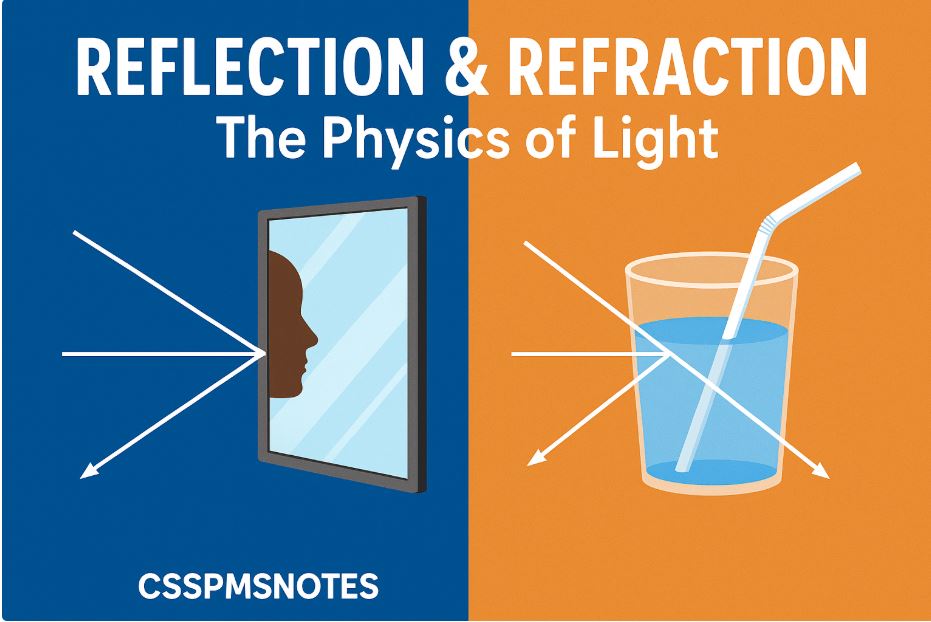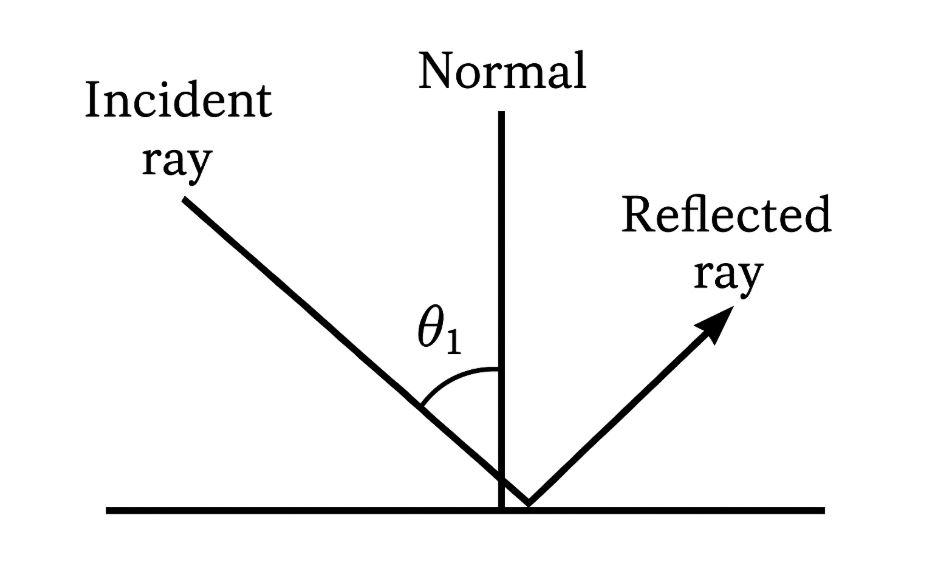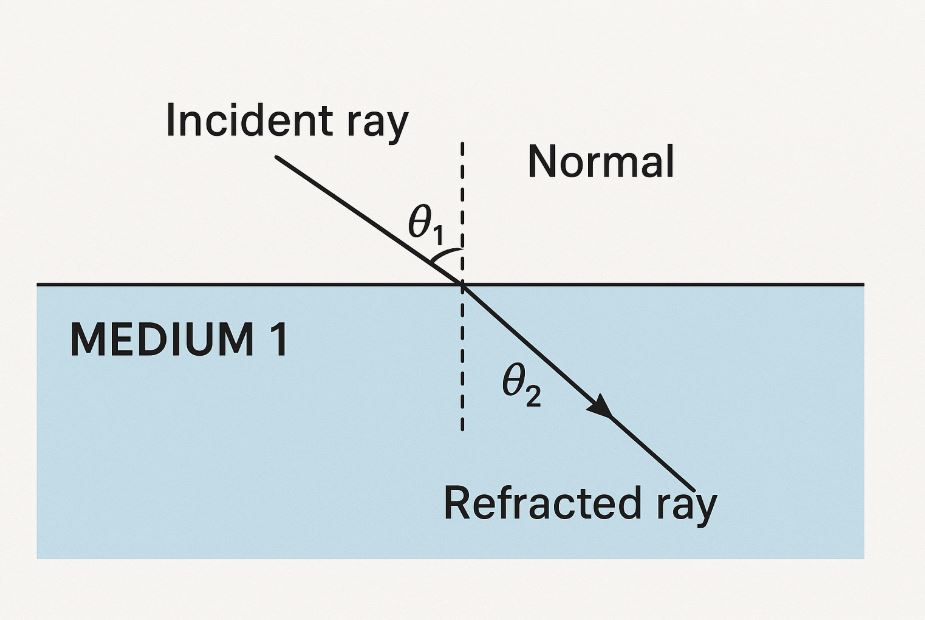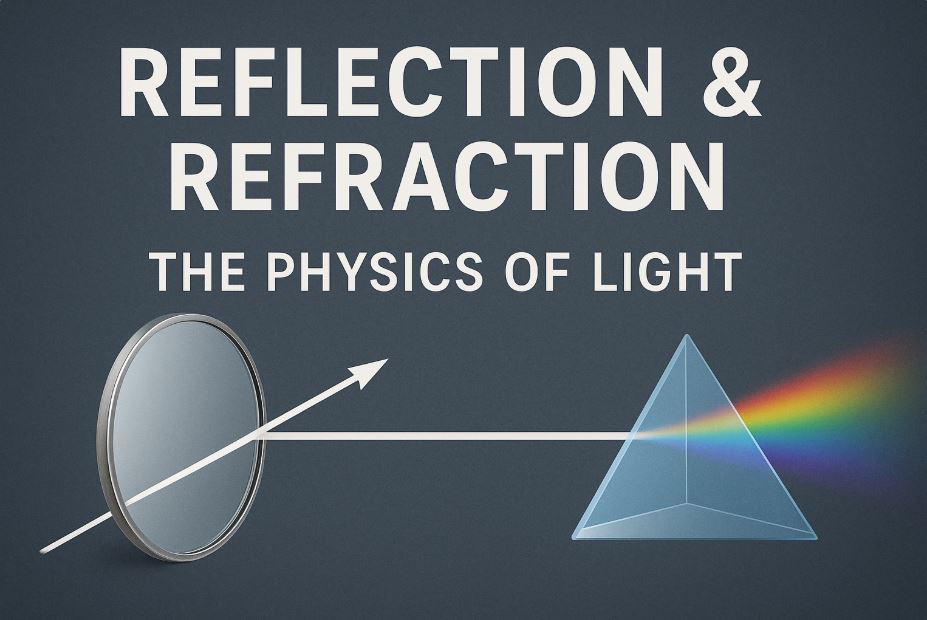Reflection & Refraction: The Science of Light Explained

Introduction: How Light Tells Its Story
Have you ever looked into a mirror and seen your face looking back at you? Or noticed how a pencil seems bent when placed in a glass of water?
These everyday wonders happen because of two amazing behaviors of light — reflection and refraction. Light is one of the most fascinating forms of energy. It travels in straight lines and moves extremely fast — about 300,000 kilometers per second in air!
When light meets a surface, it can reflect, refract, absorb, or scatter. In this article, we’ll focus on reflection and refraction — two key concepts that help explain how we see the world.
I. What is Light?
Light is a form of electromagnetic energy that allows us to see. It behaves both like a wave and like a particle (called a photon).
In physics, this is known as the dual nature of light. Light travels in straight lines until it hits an object. When that happens, its path may change — and that’s when reflection or refraction occurs.
II. Reflection: When Light Bounces Back
Definition
Reflection happens when light hits a surface and bounces back into the same medium, instead of passing through it.
Types of Reflection
- Regular (Specular) Reflection:
- Happens on smooth surfaces like mirrors or still water.
- Produces a clear image.
- Diffuse Reflection:
- Happens on rough surfaces like paper or walls.
- The light scatters in many directions, so no image is formed.
Laws of Reflection
- The angle of incidence equals the angle of reflection.
- The incident ray, reflected ray, and the normal line all lie in the same plane.
Simple Diagram Idea:
Draw a straight line (normal), a ray hitting the surface (incident ray), and a ray bouncing off (reflected ray). Label the angles.

Examples in Daily Life
- Mirrors in your home.
- Shiny metals and polished stones.
- Still water showing your reflection.
Applications
- Periscopes use mirrors to see over obstacles.
- Car headlights and solar cookers use reflection to direct light.
- Optical instruments like telescopes rely on reflective surfaces.
III. Refraction: When Light Bends
Definition
Refraction happens when light passes from one medium to another (like air to water) and changes direction due to a change in speed.
Why Does It Happen?
Light slows down when it enters a denser medium (like water or glass). This change in speed causes it to bend.

Laws of Refraction
- The incident ray, refracted ray, and normal all lie in the same plane.
- The ratio of the sines of the angles is constant for the same two media.
This is known as Snell’s Law:
n1sini = n2sinr
Where:
n1 = refractive index of the first medium
n2 = refractive index of the second medium
i = angle of incidence
r = angle of refraction
Refractive Index
The refractive index (n) tells how much light slows down in a material.
n=c/v
Where:
- c = speed of light in air (or vacuum)
- v = speed of light in the medium
Example Values:
| Medium | Refractive Index |
|---|---|
| Air | 1.00 |
| Water | 1.33 |
| Glass | 1.50 |
Examples of Refraction
- A pencil looks bent when placed in water.
- Lenses in glasses or cameras bend light to form images.
- A rainbow forms when sunlight refracts and disperses through raindrops.
Applications of Refraction
- Lenses in microscopes, telescopes, and cameras.
- Optical fibers used for high-speed internet and medical imaging.
- Spectacles to correct vision.
IV. Reflection vs Refraction
| Feature | Reflection | Refraction |
|---|---|---|
| Definition | Bouncing back of light from a surface | Bending of light when it enters another medium |
| Medium | Light stays in the same medium | Light changes medium |
| Law | i=r | n1sini = n2sinr |
| Speed of Light | Remains the same | Changes |
| Example | Mirror | Glass of water |

V. Classroom Experiments
1. Reflection Experiment
- Take a mirror and shine a laser pointer at it.
- Measure the angle of the incoming and reflected beam — both will be equal!
2. Refraction Experiment
- Place a glass block on a piece of paper.
- Draw the path of a light ray entering and leaving the block.
- You’ll notice the bending of light at both boundaries.
VI. Common Misconceptions
- Light slows down in denser media (it does not speed up).
- Reflection and refraction can occur together, like when light hits a glass surface.
- Not every shiny object gives a clear reflection — the surface must be smooth.
VII. Why Reflection and Refraction Matter
Understanding how light behaves helps us design better optical instruments, improve communication systems, and even study the universe.
Without reflection, mirrors wouldn’t exist. Without refraction, lenses and rainbows would vanish from our world.
VIII. Summary
- Reflection is when light bounces back from a surface.
- Refraction is when light bends as it passes through different materials.
- Both follow strict physical laws that explain light’s path.
- They form the foundation of optics — the branch of physics that studies light.
“Every mirror that smiles back and every rainbow that glows above us is light teaching us its secrets — through reflection and refraction.”
IX. FAQs
1. What is the main difference between reflection and refraction?
Reflection is the bouncing back of light, while refraction is the bending of light when it changes medium.
2. Why does a straw look bent in water?
Because light bends (refracts) when moving from water to air, making the straw appear displaced.
3. Can reflection and refraction happen together?
Yes, when light hits transparent materials like glass, part of it reflects and part refracts.
4. What is the refractive index of water?
The refractive index of water is approximately 1.33.
5. Who discovered the laws of reflection and refraction?
The laws of reflection were known since ancient times, while Snell’s Law of refraction was discovered by Willebrord Snellius in the 17th century.